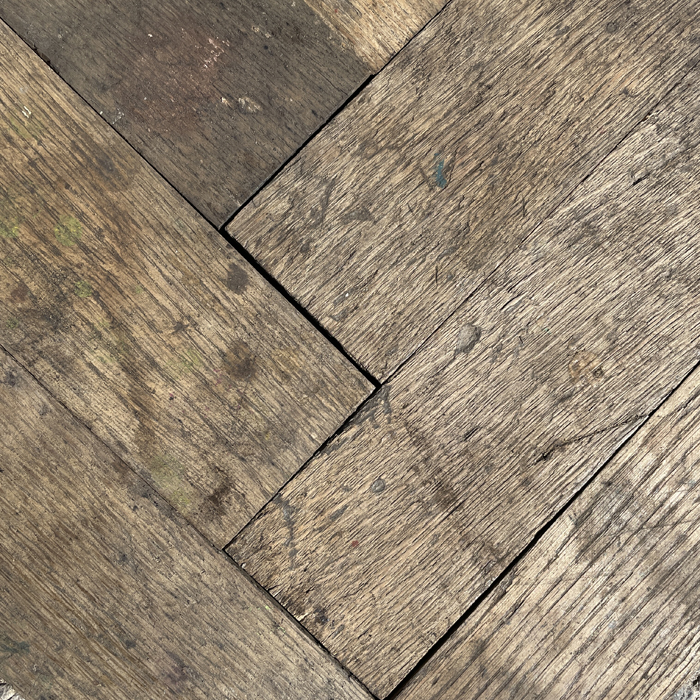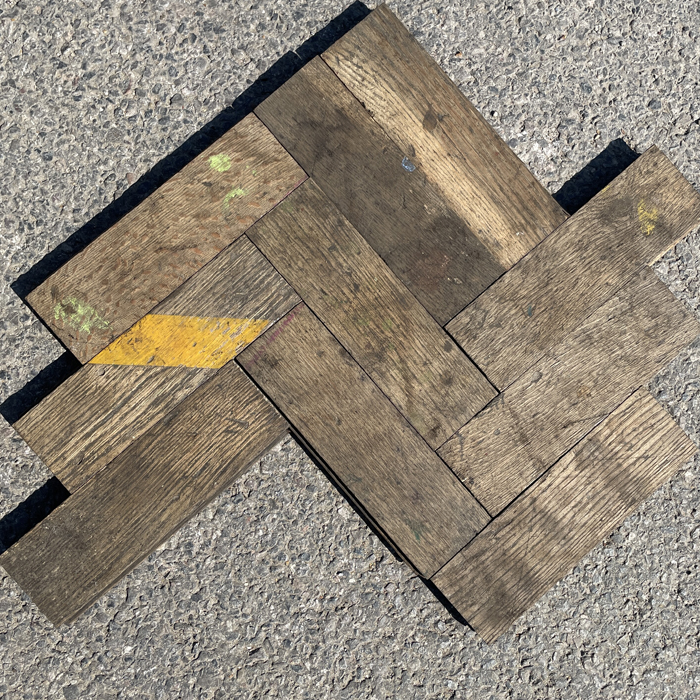7.25sqm Reclaimed English Oak Parquet Block
rectangular parquet blocks, tongue and grooved,
£400 incl. VAT the batch
In stock
Solid English Oak as used in the Victorian and Edwardian periods to cover large open spaces in civic, domestic or commercial premises. Reclaimed parquet comes to you graded, sorted and bagged: 1sqm per bag. The blocks are tongue-and-grooved – some tongues will be lacking. Usually laid as herringbone but other styles such as Dutch-bond (brick-wise) can look great – run the field under the skirting for a more expansive feel or run a border with the same blocks.
The blocks come in a spectrum of mellow browns and light cream shades in the sap with worn and darkened patches in the heartwood.The annual growth rings are strongly marked in this quarter sawn batch and show as a glistening flame like pattern through the grain in what are known as Medulary Rays. The grain itself is straight, with a coarse, variegated texture. English Oak is famously hard and resistant to rot and decay. It is at once attractive and hard wearing which makes it suitable for decorative purposes in high-traffic situations such as public rooms, hallways and commercial premises.
These blocks are reclaimed and have a light layer of bitumen on their underside. These are usually re-laid without removing the bitumen – today’s adhesives stick the old to your sub-floor but this does mean it can not be combined with underfloor heating.




